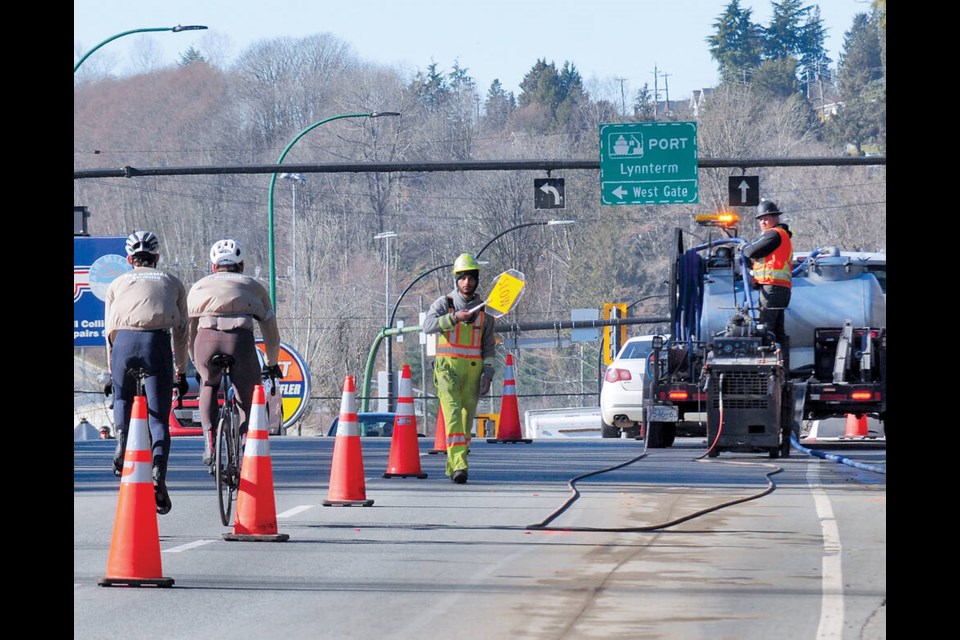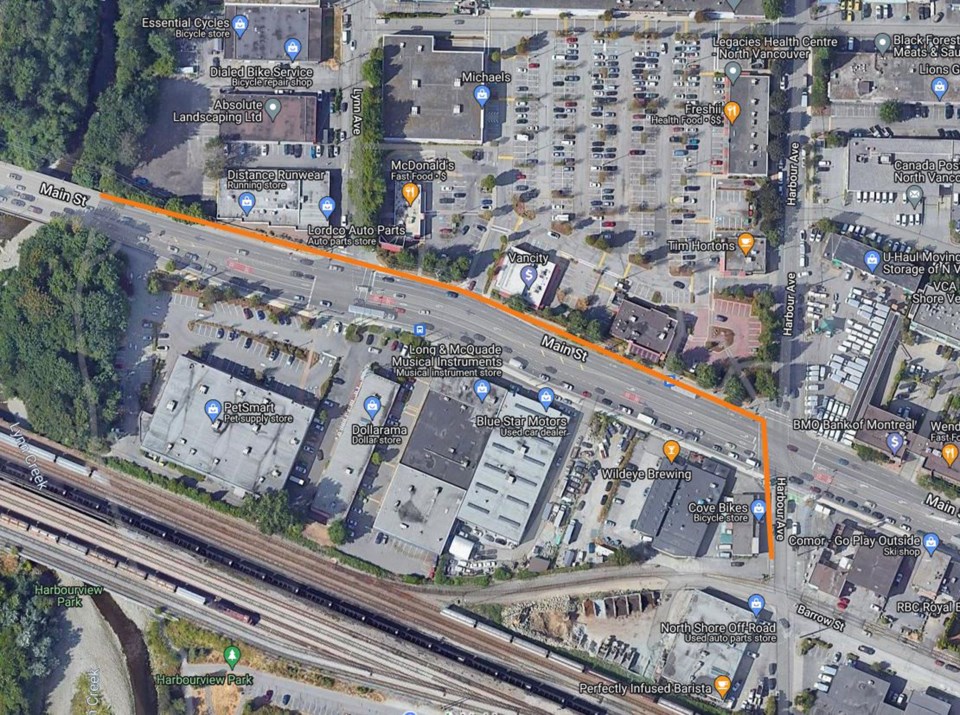One of the hairiest stretches of the North Shore for cyclists is about to become a lot safer.
District of North Vancouver contractors have begun construction on a cycle track running along the north side of Main Street between Harbour Avenue and the Lynn Creek bridge.
People commuting on bikes from the Ironworkers Memorial Second Narrow Crossing or east of the Seymour River currently have a bike route that runs along Barrow Street but it terminates at Harbour, meaning cyclists have no choice but to take Main Street, which is both a major arterial and a truck route.
The new cycle path will be built up on the existing boulevard alongside the sidewalk.
“You’re going to be separated from traffic. You’re going to be more comfortable. It’s going to feel safer,” said Peter Cohen, deputy general manager of engineering for the district. “Ultimately, it’s going to try to help achieve more toward the goal of getting more people out of cars and getting them into active forms of transportation.”
The district’s official community plan has a target of making 35 per cent of trips made by walking, cycling or transit by 2030.
“One of the best ways for us to do that from our cycling infrastructure is by filling some critical gaps,” Cohen said.
The price tag for closing the gap in the safe cycling network is roughly $1.35 million.
Work on the project is expected to last until June. During that time, the westbound lane of main Street will have to be closed for periods of time.
“We anticipate impacts to the westbound traveling public through this area, particularly during the morning and afternoon peak periods – please consider alternate routes or give yourself extra time in the coming months,” a statement from the district reads.
Heather Drugge, a cycling advocate and member of HUB Cycling, said the project will be a major improvement. That 250 metre stretch is among the worst to ride on the North Shore, she added.
“It’s quite scary. I don’t like that segment,” she said. “It will not feel like you’re taking your life in your hands any longer, because there will be separation from the buses, trucks, cars, especially during rush hour.”
Drugge said if someone on a bike doesn’t feel safe, they’ll try to find a safer but probably less convenient workaround, which sometimes just don’t exist.
“It offers more options and that’s super important when you’re trying to build a cycling network,” she said. “The more choice that people have, the more likely they are to ride. That reduces traffic and all the greenhouse gases that go with it.”
With just a painted, narrow lane running from the bridge over Lynn Creek east to Gladstone Avenue, that is the next section of the network needing improvement, Drugge added.
“Gap after gap, they’re being closed. That’s good,” she said.




